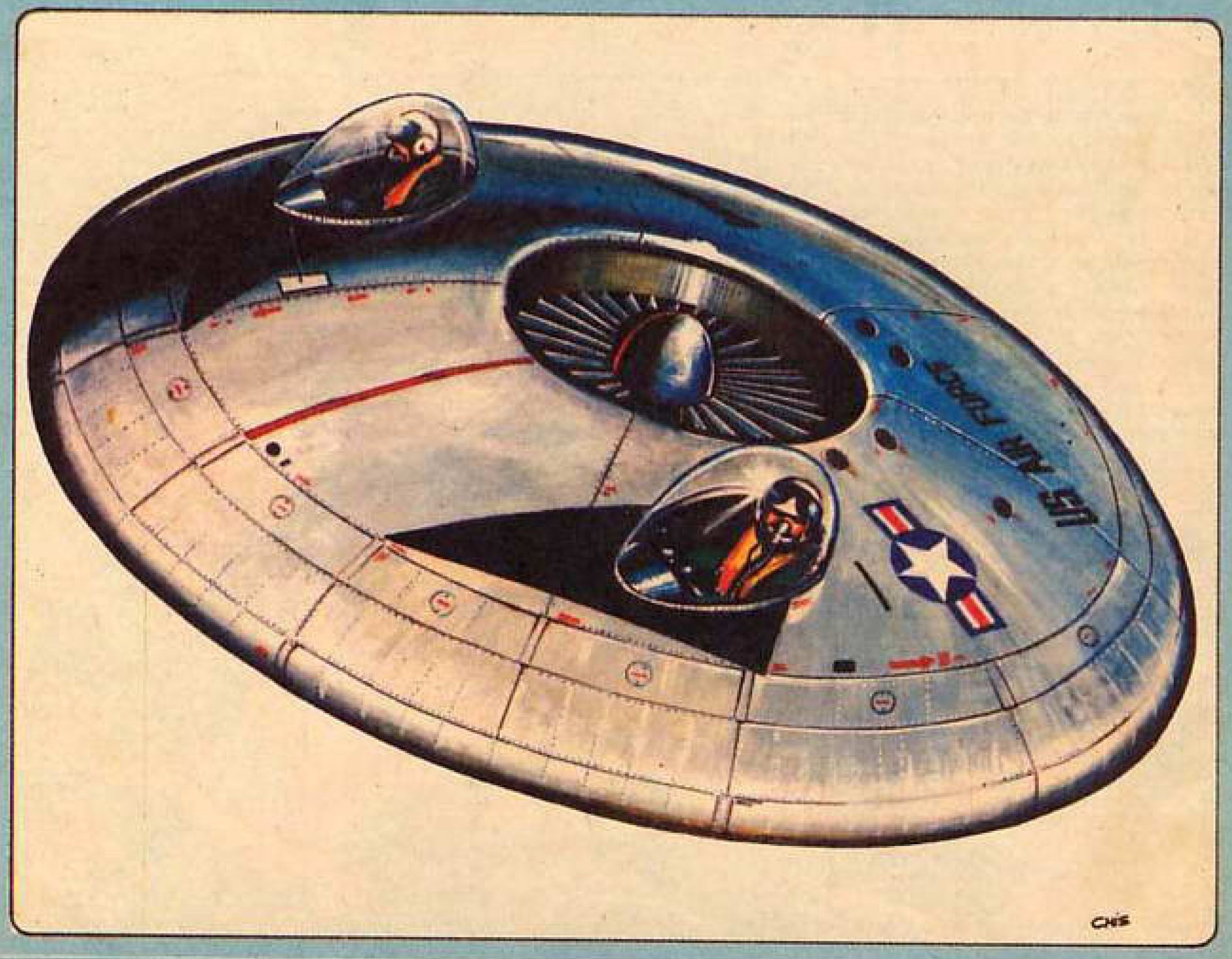Проблемы описанные на инглише. Взято отсюда
There is undoubtedly a certain fascination with UFOs of the alien variety. While my personal view is that the whole concept was a fabulous disinformation campaign, delivered through the USAF Projec…

hushkit.net
Aerodynamics
Before launching into our list, I feel I should say a word about the aerodynamics of circular-winged aircraft. If you are in search of a quick fix you may jump straight into the top 10 below; for those wishing to know more, I’d like to explain a little about the aerodynamics of the flying saucer, mainly because having a circular wing is largely such a bad idea. The issues I will raise may not be insuperable, but their impacts do have an influence on the configuration, control and performance of circular and annular winged aircraft.
The most obvious problem is going to be the lift-dependent drag of the aircraft.
Lift–
dependent drag is the
drag caused by the generation of
lift. There’s no such thing as a free lunch in aerodynamics and if you order a bigger portion you’re going to get a bigger bill (unlike in nouveau cuisine where the inverse occurs). This is proportional to lift squared, divided by
aspect ratio (a measure of the slenderness of the wing as viewed from above or below). The larger the aspect ratio, the smaller the lift-dependent drag at a given lift. This is why sailplanes have long slender wings, and for low-speed aircraft, high aspect ratio is a good indicator of efficiency.
For a circular wing, the Aspect Ratio is 4/Pi, or about 1.27. An equilateral triangle has an aspect ratio of about 2.31, and a typical modern airliner will have an aspect ratio around 10.0 or more. So circular wings are inefficient.
A second impact of having a low aspect ratio is that the lift curve slope is low. This slope is the amount of lift generated per degree of angle to the airflow. As a generalisation, a circular wing will require about twice the angle to the airflow to generate the same lift as a high aspect ratio wing of the same area. So, in addition to having high lift dependent drag, we can expect our circular wings, at low speed, to have high angle of incidence, to need high power, and, perhaps to have significant forward visibility issues.
Stability and Control
What of stability and control? Well, one issue is going to be to have sufficient control power. Because of the compact nature of a circular wing, the arm available for rear-mounted control surfaces is likely to be relatively small, compared to the conventional rear-fuselage-mounted tail surfaces.
From a longitudinal stability point of view, care will be required, for a non-spinning circular configuration, to manage the longitudinal stability. If the centre of gravity is at the point of radial symmetry, the configuration will be longitudinally unstable, because the centre of lift will, at subsonic speeds, be ahead of this. For simple light aircraft applications, the centre of gravity will generally be designed to avoid this issue, for example by having a forward located engine. For radially symmetric designs, low speed stability is likely to be significant problem, unless the whole airframe is spun, like a frisbee, so that a combination of angular momentum and gyroscopic precession provides a measure of longitudinal stability.
From the lateral perspective, there is no reason to anticipate that a flying disc at low incidence would be anything but neutrally stable. However, at the relatively high incidences which might be required for take-off and landing, it is probable that vortices would be shed from the highly swept outer wing leading edge, which would be destabilising in both pitch and yaw, hence requiring some form of fin, rudder and aileron control.

